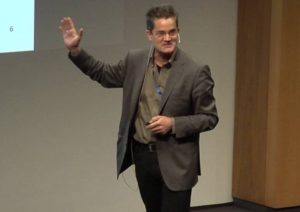In this video from the Blue Waters Summit, Thomas Schulthess from CSCS presents: Reflecting on the Goal and Baseline of Exascale Computing.
Application performance is given much emphasis in discussions of exascale computing. A 50-fold increase in sustained performance over today’s applications running on multi-petaflops supercomputing platforms should be the expected target for exascale systems deployed early next decade. In the present talk, we will reflect on what this means in practice and how much these exascale systems will advance the state of the art. Experience with today’s platforms show that there can be an order of magnitude difference in performance within a given class of numerical methods, depending only on choice of architecture and implementation. This bears the questions on what our baseline is, over which the performance improvements of exascale systems will be measured. Furthermore, how close will these exascale systems bring us to deliver on scientific goals, such as convection resolving global climate simulations or throughput oriented computations for meteorology?
Thomas Schulthess holds a chair for computational physics at ETH Zurich and directs the Swiss National Supercomputing Centre (CSCS) in Lugano since fall of 2008. Here received his PhD in 1994 from ETH Zurich and spent many years at Oak Ridge National Laboratory, where today he holds a Visiting Distinguished Scientists appointment. While his primary research is on computational methods for materials science, as CSCS Director he has taken interest in developing energy efficient computing systems for climate modeling and meteorology. Thomas led the teams that won the ACM Gordon Bell Prizes in 2008 and 2009 with the first production-level applications that sustained a petaflop, and in 2016 along with MeteoSwiss won the Swiss ICT Award for outstanding IT-based projects and services.





